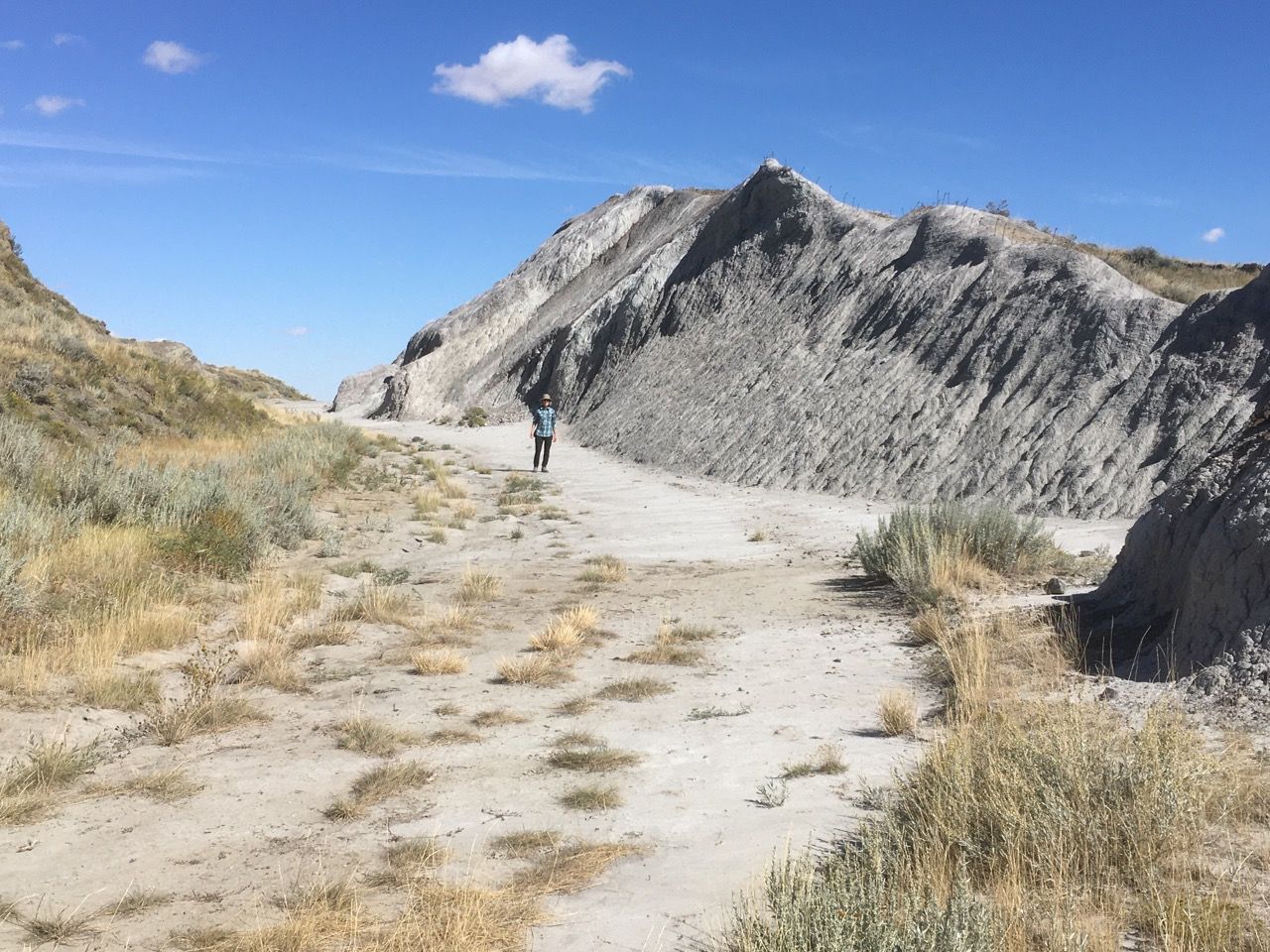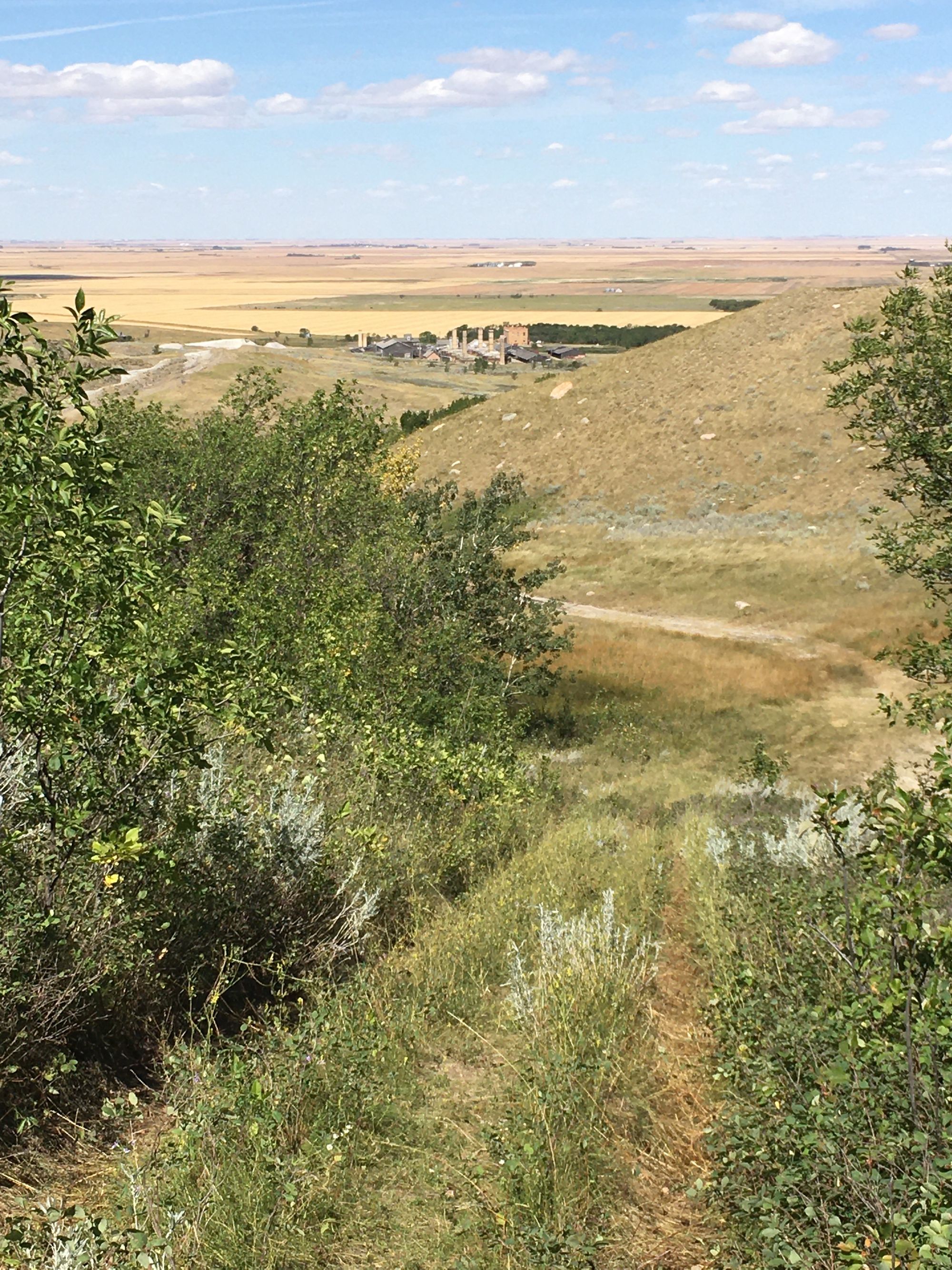Here's another page in my Department of Exploring Little Known Treasures of Saskatchewan. Our trusty camper van, Vanna White, took us here last summer, 2020.
Who knew that North America's best-preserved brick-making plant from the early 20th century was almost next door? It's a beautiful and authentic site that is filled with tourism potential. Yes, the best old brick plant in all of North America, I was told recently by an expert in historical brick-making. I guess there's a niche for everything.
This remarkably intact complex includes 10 circular brick kilns, now with grass growing on the domed roofs, much of the original machinery, stock sheds, a laboratory, underground drying tunnels, a carpentry shop, smoke stacks, a bunkhouse and remnants of a narrow-gauge railway, in a compact piece of grassy prairie just south of Moose Jaw, Saskatchewan.
There's a small museum and a pleasant coffee shop with home-made pastries, if you need coaxing for a visit.

The distinctive light-coloured bricks made here were used to build the Bessborough Hotel in Saskatoon, the imposing Cathedral in Gravelbourg, and were shipped east for construction of the Château Frontenac in Quebec City. They can be identified by the black flecks, the signature impurity of the clay in the area. I think we have a few in our backyard patio.
A different, and rare, heat-resistant clay first discovered in the hills in 1886 was used to make fire bricks for boilers in warships in World War II.

The white and grey clay pits are part of the same Whitemud geological formation found in the Eastend area of Saskatchewan.


The hiking trails aren't maintained, in fact they disappear at times, so there's some rambling and scrambling to get to the top of the hills. But what a reward! Spectacular hundred-mile views of the surrounding prairie and checkerboard fields, all the way to the horizon.



The factory was a going concern from 1914 until 1989, and was designated a National Historic Site in 1994. Sadly, there are signs of serious deterioration in the buildings. I was told their biggest enemy is Mother Nature. Prairie winds, rain and tornadoes, cause on-going destruction that requires significant funds to repair. Even the soil is a problem. The alkali content of the clay destroys the buildings from the ground up.
The Claybank Brick Plant Historical Society has worked hard to preserve this unique piece of our industrial heritage, and they have ideas to promote it as a tourist and nature destination. Unfortunately it seems the provincial government, who owns much of the site, has not shown interest in serious preservation or development. Personally, I think the Department of Tourism should jump at it.
The Historical Society also sees potential for a Field School in conjunction with Sask Polytech, to train students in building restoration, construction, architecture, masonry, and other trades.

The Claybank Brick Plant is worth a visit, especially if you have an interest in Saskatchewan history or hiking. There are excellent outdoor information panels detailing the process from clay to bricks, and the hiking is exciting on land that has never been broken for farming.
I hope our governments will choose to preserve this unique example of industrialization from our past, and capitalize on such an authentic tourism site just a short drive from the Trans-Canada Highway.

